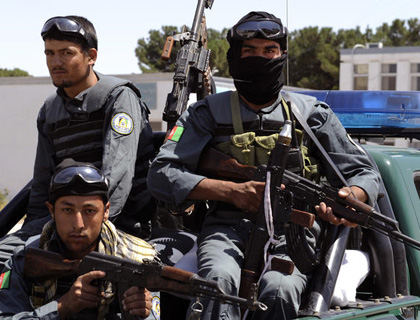The Center for Strategic and International Studies has a new Burke Chair report entitled “Failing Transition: The New 1230 Report on Progress Toward Security and Stability in Afghanistan”. The 50-pages report uses combination of narrative and graphic analysis to examine the new Department of Defense report on the Afghan War issued late in July 2013, along with new SIGAR and UN reporting. It shows that the level of insurgent activity is rising, and demonstrates rising levels of violence and casualties.
Below are excerpts and summary of the report.
“The report shows that ISAF and the Department of Defense have withdrawn past claims that the number of enemy initiated attacks were dropping. The data also show that Afghan military and civilian casualties increased during and after the surge, and the insurgent are becoming far more effective at targeted killings. Total Afghan military casualties have increased far more rapidly than civilian casualties, and total ISAF and ANSF casualties are now far higher than at any previous time in the war, in spite of the fact that the ISAF share of casualties is now negligible…”
At the same time, some trends do favor Transition. The data on Afghan force development are mixed, but indicates that Afghan forces may still be able to succeed if -- as the latest DoD, ISAF, and SIGAR data show -- they receive major outside finding and large numbers of US and allied advisors, partners, and trainers well beyond 2016.
At the same time, the new DoD and SIGAR reports make it clear that problems with leadership, the 2014 election, corruption, power brokers, and poor governance all pose critical threats to Transition. So does the lack of any clear plan to help Afghanistan transition out of levels of aid and military spending larger than its domestic GDP and aid roughly equal to seven times its domestic budget.
It is also clear from the new Department of Defense and SIGAR reports, as well as earlier GAO reporting, that that the US still has no real Transition plan for the period after 2014. The US military has some elements of a plan for the ANSF, but no funding or level of advisors and enablers has yet been approved, and the lead time necessary to budget and plan for the future and ensure continuity for those who stay is elapsing.
The US Department of State and USAID do not seem to have clears plans for the civil side of the war. They continue to make exaggerated claims of progress, understate the risks, and focusing on project aid rather than the war and need for stability
In spite of the relatively optimistic growth prospects, Afghanistan’s economy is exposed to some serious risks which need to be carefully managed. First and foremost, there is a lot of uncertainty attached to the upcoming elections in 2014 and the impact of the transition process on Afghanistan’s security situation. The fragile security environment has been the single most binding constraint to private-sector investment and private-sector-led growth. Continued violence, economic crime and systemic corruption also have often undermined progress in Afghanistan’s governance and state-building agenda. Much will depend, therefore, on Afghanistan’s success in achieving peace, stability and reconciliation. Without it, the above-mentioned growth prospects will not materialize.
“Moreover, risks lie in the uneven distribution of aid impact. Aid has not been evenly spread across the country. Because of the choices made by donors, and the predominant role of stabilization and military spending, the conflictaffected provinces have had significantly higher per-capita aid than the more peaceful (and often poorer) provinces. As a result, the slowdown in aid is likely to be felt more acutely in the conflict-affected areas and in urban centers, most likely through a loss of wage-labor opportunities as military bases and provincial reconstruction teams (PRTs) close. In urban centers, such as Kabul, wage levels of higher-qualified people might decline due to fewer opportunities in donor-financed projects. At present, with seven out of 30 PRTs closed, the available analysis and data do not suggest any significant impact, or it might be too small to influence (available) economic aggregates. Nevertheless, there are considerable political economy risks that deserve constant attention.”
The report concludes that there may be a case for delaying a formal agreement on set of Bilateral Security Agreements with Afghanistan until the US can see the result of the 2014 election. Even so, the US will be far better off if the Afghan election is held under circumstance where the Afghan people know what US plans and conditions really are; if Transition proceeds on the basis of plans, budgets and transparency that have Congressional and popular support; and if the Administration, Congress, and American people have agreed that the war has sufficient strategic value and cost-benefits to justify a successful Transition.
“None of these conditions are currently being met. To put it bluntly, the time to meet them is long overdue. So is the time for a fully coordinated set of civil-military plans, a single budget for the war rather than vague departmental OCO budgets, and full transparency and accountability. A decade is far too long to wait. If the Administration cannot meet these conditions by mid-September, the Congress should make all of them a legislative requirement as part of its action on budget request.”

